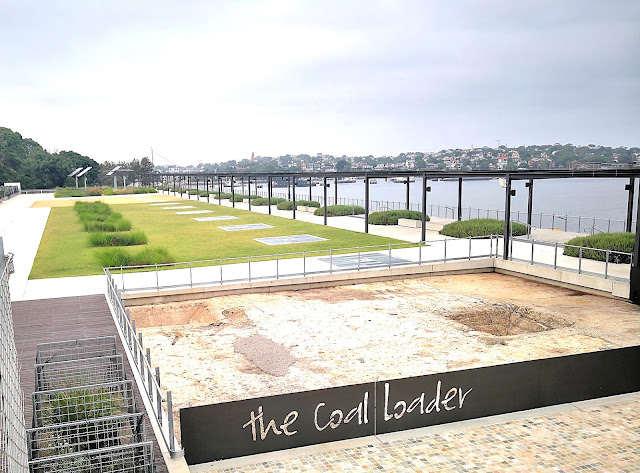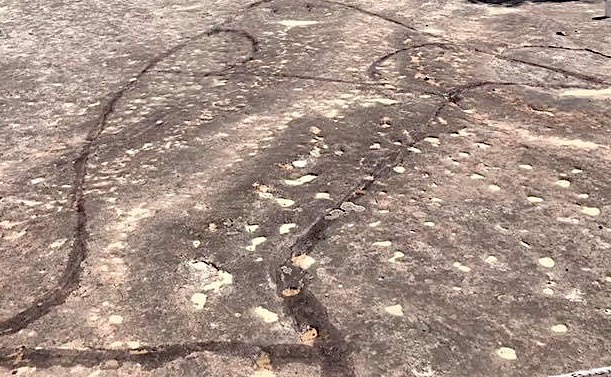 |
| The Coal Loader: Waverton Peninsula, NSW |
Located in Waverton on the Balls Head peninsula, a short drive from Lane Cove in North Sydney, the Coal Loader has layers of history to explore.
The site, was occupied by the Cammeraygal people, and there is an Aboriginal rock carving of a marine creature to see.
An Aboriignal rock shelter in the area was documented by an archaeologist from the Australian Museum in 1964. The Aboriginal name for Balls Head is Yerroulbine.
The Australian poet Henry Lawson wrote 'The Sacrifice of Balls Head', as a protest against plans to build a coal bunkering depot on the site in 1916.
A Coal Loader was built by 1920 with a platform with four tunnels underneath. Coal would be transferred from supply ships coming from places like Newcastle.
 |
| Construction of Balls Head Coal Loader viewed from Balls Head Bay, NSW, 1918, Stanton Library Historical Services’ |
The Ball's Head area was proclaimed as a public reserve by Premier Jack Lang in 1926, as the Coal Loder continued to function.
The coal was taken by a railway system through the tunnels to the wharf in Balls Head Bay and loaded onto steamers.
In the 1930s, a group led by conservationist Walter Froggatt replanted native trees on the site.
 |
| Mr. W. W. Froggatt planting a tree on Ball's Head at the Arbor Day ceremony on Saturday. Sydney Morning Herald (NSW : 1842 - 1954), Monday 31 July 1933 |
Work continued at the Coal Loder until the 1970s, when coal was exported to Japan.
Ships took on their final load of coal at Ball's Head in 1992.
Not long afterwards, an old oil tank site was transformed into a wetland.
The local community battled to retain the land for public use, and finally, in 2007, the facility was re-opened as the Coal Loader Centre for Sustainability,
In January 2022, MV Baragoola, a ferry, sank at her mooring alongside the Balls Head Coal Loader, and it was decided that the vessel would be scrapped.
 |
| Sydney ferry BARAGOOLA the morning after sinking at Balls Head. The morning after her sinking, 2 January 2022. Anton Leddin |
Things To Do
The only remaining Australian lighthouse supply ship, SS Cape Don, is berthed at the former coal loading wharf in Balls Head Bay.
Visit Aboriginal waterholes and grinding grooves.
Walk around native bush nursery and food gardens.
See an Aboriginal engraving right next to the Coal Loader building.
Meander along the waterfront and extensive parklands.
Visit the cafe or have a BBQ.
Coal Loader Artisans Market.
Around The Coal Loader
 |
| Ball's Head Reserve, Waverton, NSW |
 |
| Ball's Head Reserve, Waverton, NSW |
 |
| View's from Waverton peninsula, NSW |
 |
| One of the tunnels at the Coal Loader on the western side of Waverton peninsula, NSW |
 |
| At the Coal Loader on the western side of Waverton peninsula, NSW |
 |
| The only remaining Australian lighthouse supply ship, SS Cape Don, is berthed at the former coal loading wharf in Balls Head Bay, NSW |
 |
| At the Coal Loader on the western side of Waverton peninsula, NSW |
 |
| Balls Head Reserve in Waverton, NSW, engraving of a whale with a man inside its belly |
More Information
The Coal Loader located at: 2 Balls Head Drive, Waverton 2060 (on the right hand side before Balls Head Reserve). Contact. Telephone: 9936 8100





































